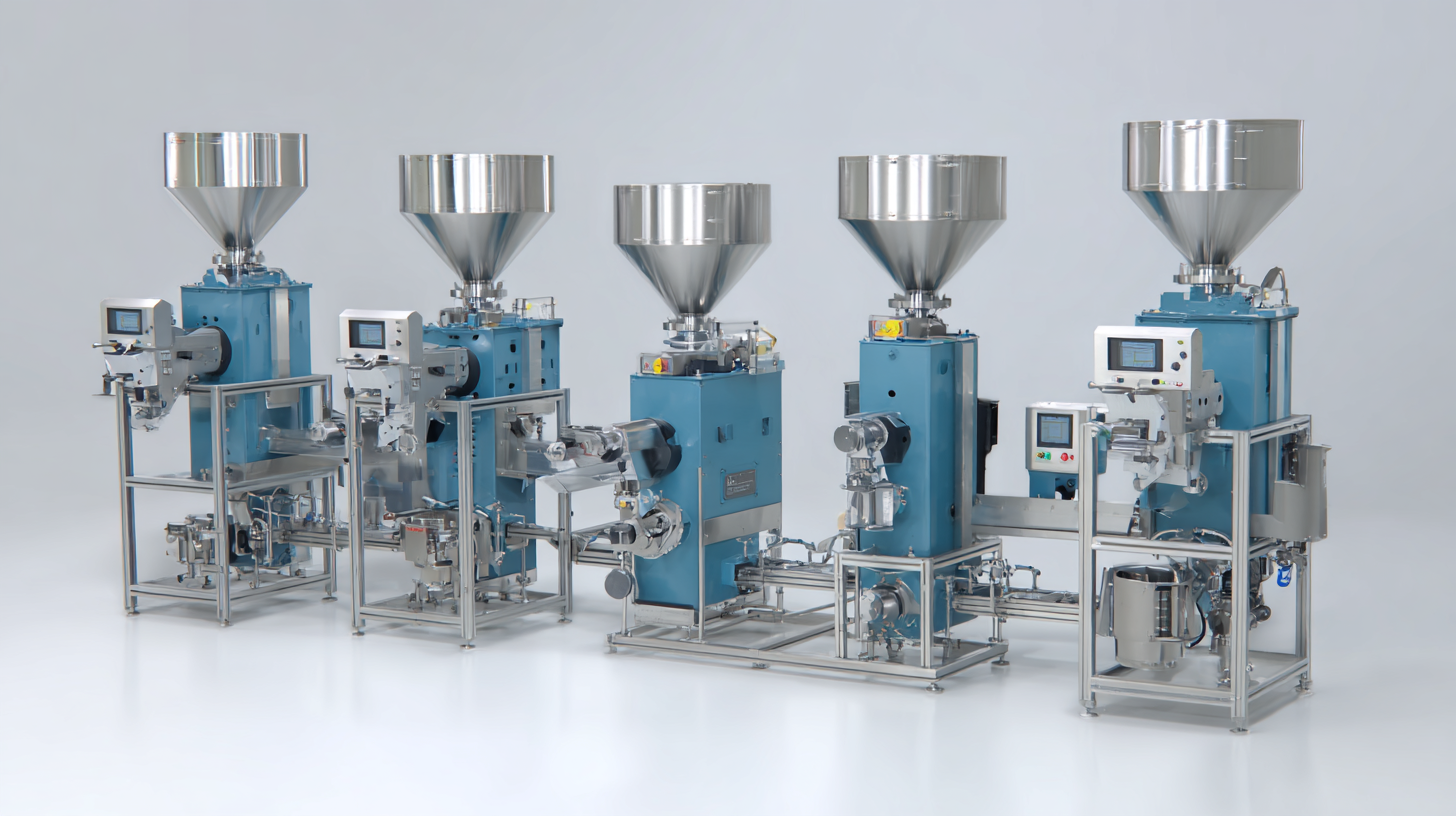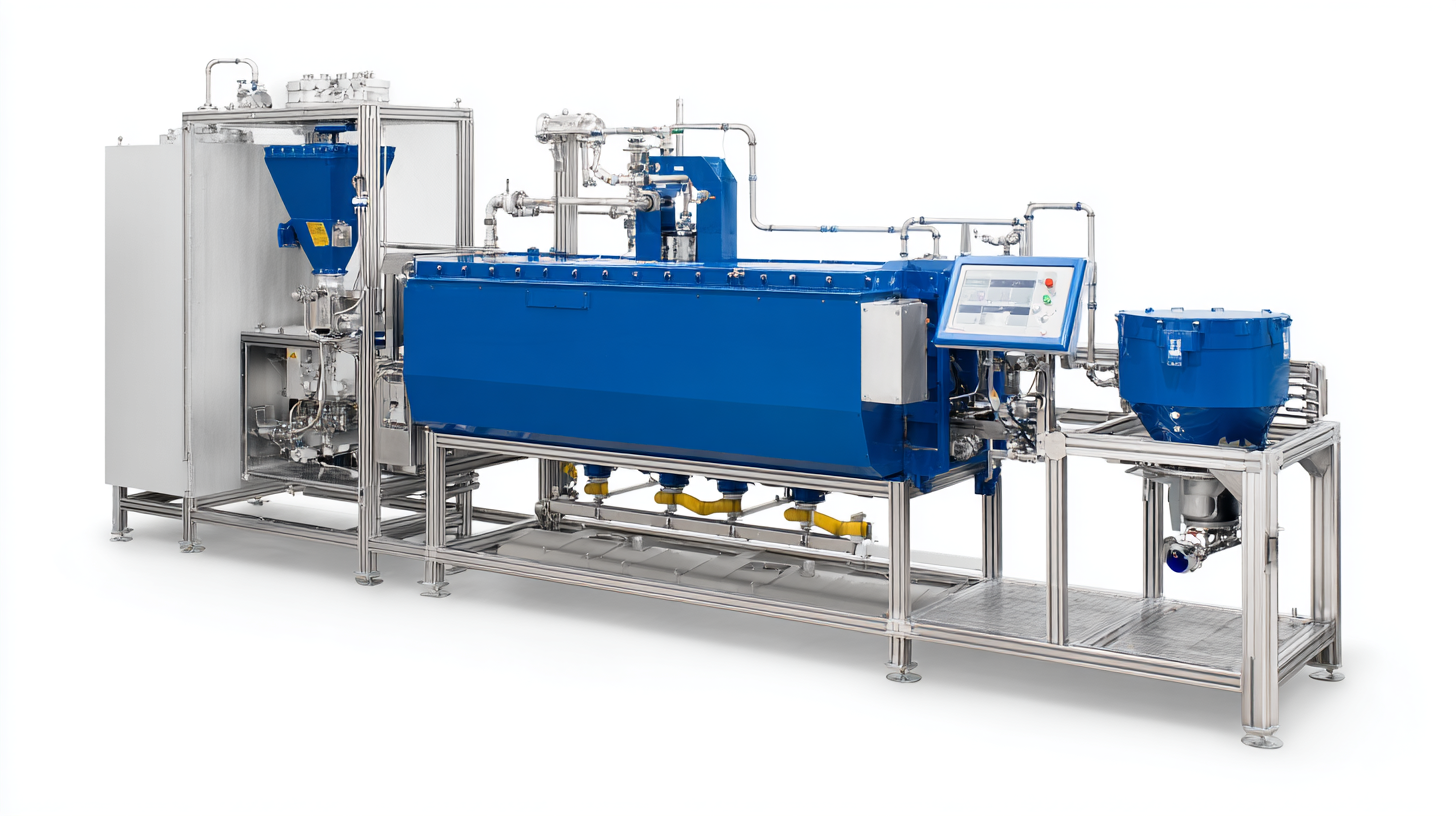In the rapidly evolving landscape of manufacturing and production, the importance of efficient powder handling cannot be overstated. The implementation of a Powder Feeder System has emerged as a game-changer, particularly in industries where precision and consistency are paramount. According to Dr. Emily Richards, a leading expert in powder technology and automation, "The integration of advanced Powder Feeder Systems maximizes efficiency and accuracy, significantly reducing waste while ensuring optimal performance." This statement encapsulates the essence of why businesses are increasingly adopting this technology.

With a focus on streamlining processes and enhancing productivity, the benefits of utilizing a Powder Feeder System are numerous. From improved material flow to enhanced process control, these systems not only facilitate better handling of powders but also contribute to cost savings and operational efficiency. In this article, we will explore the top five advantages of employing a Powder Feeder System, shedding light on how it transforms powder management in various applications. As industries seek to innovate and improve their processes, understanding these benefits becomes crucial for maintaining a competitive edge.
Powder feeder systems have become increasingly essential in manufacturing processes, especially in industries requiring precise material handling. One of the main advantages of these systems is their ability to maintain a consistent flow of powder, ensuring uniformity in production. This precision reduces waste and enhances the quality of the final product, making it a critical component in applications such as pharmaceuticals, food processing, and additive manufacturing.
Tips: To optimize the effectiveness of a powder feeder system, consider calibrating the feeder regularly to account for variations in powder characteristics. Make sure to also keep the system clean to prevent contamination, which can affect product quality and consistency.
Another significant benefit is the flexibility these systems offer. They can be easily adapted to accommodate different powder types and production requirements. This adaptability allows manufacturers to switch between various materials without extensive downtime. Furthermore, automation in powder feeding can lead to increased productivity and reduced labor costs, creating a more efficient operation overall.
Tips: When implementing a powder feeder system, conduct a thorough analysis of your production process. Identifying key areas where automation can be integrated will help you maximize the system’s effectiveness and return on investment.
Automated powder feeding solutions are revolutionizing the way industries handle powders, bringing enhanced precision and efficiency. With the growing demand for advanced manufacturing processes, industries are increasingly adopting automated systems to improve their operational efficacy. According to a recent market analysis, the automatic powder forming machine market is projected to grow from USD 302.3 million in 2025 to USD 465.0 million by 2035, highlighting the significant trend towards automation in powder handling.
The integration of intelligent robotics in various sectors is also paving the way for more precise powder feeding mechanisms. This technology not only streamlines the feeding processes but also minimizes waste, thereby contributing to sustainability. As seen in other markets, such as the coating equipment sector, which is expected to surge to USD 35.66 billion by 2033, sectors that leverage precision-driven automated solutions are likely to experience substantial growth. Adopting automated powder feeding systems not only enhances the overall efficiency but also ensures high accuracy in applications, thereby establishing a competitive edge in today's fast-paced industrial landscape.

The utilization of powder feeder systems can significantly enhance productivity in manufacturing settings, primarily due to their time-saving features. According to a report by the International Society for Pharmaceutical Engineering, automated powder handling systems can reduce processing time by up to 30%, allowing companies to allocate resources more efficiently. This reduction in manual labor not only speeds up production cycles but also minimizes the risk of human error, leading to a more consistent product quality.
Moreover, advanced powder feeders are equipped with precise dosing mechanisms, which ensures accurate material dispensing. A study published in the Journal of Manufacturing Science and Engineering indicated that optimizing dispensing accuracy can lead to a 15-20% increase in operational efficiency. Such precision is particularly crucial in industries such as pharmaceuticals and food processing, where formulation integrity is paramount. By streamlining the powder handling process, businesses can achieve higher output levels while maintaining strict compliance with industry standards.
This chart illustrates the top benefits of using a powder feeder system for efficient powder handling, rated on a scale of 1 to 10 based on user feedback regarding their importance. The benefits include increased accuracy, reduced waste, enhanced safety, improved efficiency, and cost savings, all contributing to overall productivity enhancement.
Efficient powder handling is crucial in various industries, particularly when it comes to minimizing waste and reducing costs. One of the standout advantages of using a powder feeder system is its precision in delivering the right amount of material. This accuracy not only ensures that the processes are streamlined but also significantly cuts down on excess powder that would otherwise go to waste. By minimizing overflow and spillage, companies can optimize their material usage and ultimately improve their bottom line.
Moreover, powder feeder systems contribute to enhanced operational efficiency by automating the feeding process. This automation reduces the need for manual intervention, which can lead to human errors and inconsistency in powder application. As a result, businesses can achieve better control over their inventory, reducing the costs associated with over-purchasing raw materials. In addition, with less waste generated, companies can enjoy substantial savings, fostering a more sustainable operational approach and contributing to overall resource conservation.
| Benefit | Description | Impact on Costs | Waste Reduction |
|---|---|---|---|
| Increased Accuracy | Powder feeder systems provide precise dosing, minimizing variability in product formulation. | Reduces costs associated with rework and material loss. | Minimizes overuse of powder materials. |
| Reduced Labor Costs | Automation decreases the need for manual handling of powders. | Saves on labor costs and training expenses. | Less human error results in reduced powder wastage. |
| Improved Safety | Minimizes the risk of exposure to hazardous powders through contained handling systems. | Lower healthcare costs related to workplace injuries. | Reduces spillage and the need for cleanup, lowering material loss. |
| Consistent Quality | Ensures uniformity in product quality through consistent dosing. | Decreases costs from rejects and quality control processes. | Less reprocessing leads to reduced material waste. |
| Scalability | Easily adjust dosing for different batch sizes without significant downtime. | Increases operational efficiency and cost-effectiveness. | Flexibility in production prevents excess materials. |
In today's manufacturing landscape, the safety and ergonomics of material handling have become paramount concerns.
 Powder feeder systems have emerged as a vital solution, significantly improving the workplace for employees who handle bulk materials. According to the Occupational Safety and Health Administration (OSHA), workplace injuries related to lifting heavy loads can cost businesses over $1 billion annually. By integrating a powder feeder system, companies can minimize physical strain and the risk of injuries, promoting a safer work environment.
Powder feeder systems have emerged as a vital solution, significantly improving the workplace for employees who handle bulk materials. According to the Occupational Safety and Health Administration (OSHA), workplace injuries related to lifting heavy loads can cost businesses over $1 billion annually. By integrating a powder feeder system, companies can minimize physical strain and the risk of injuries, promoting a safer work environment.
Moreover, ergonomic advancements offered by powder feeders enhance efficiency. A study by the National Institute for Occupational Safety and Health (NIOSH) indicated that ergonomic interventions could reduce workplace injuries by up to 50%. By automating the powder handling process, these systems not only ensure precise feeding and dosing but also limit employees' exposure to hazardous substances. This approach fosters a culture of safety, empowering workers and reducing turnover while maintaining high operational standards. Ultimately, investing in powder feeder systems aligns with both safety and productivity goals, setting a new benchmark for material handling practices.
